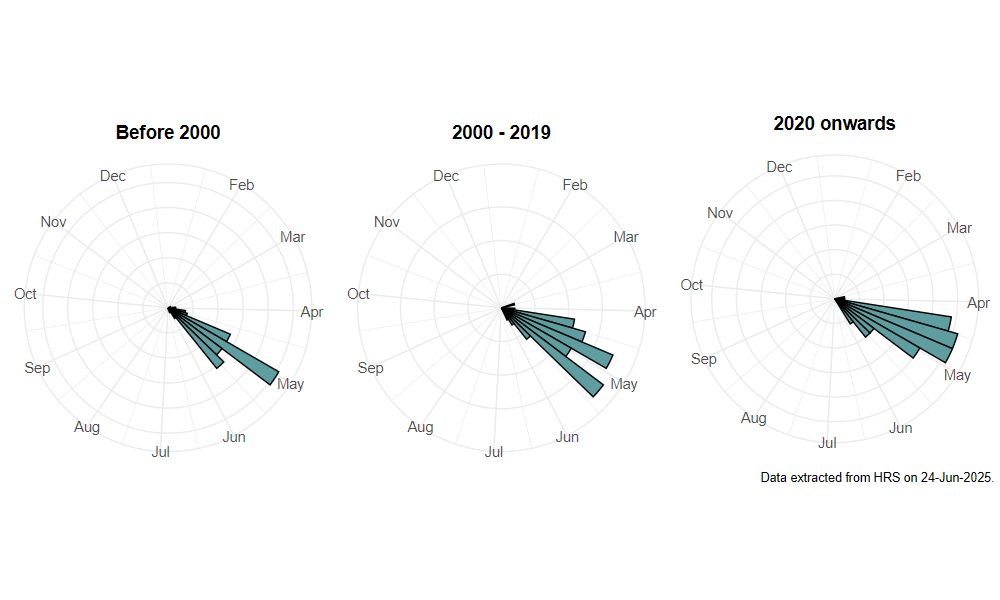Cheilosia chrysocoma (Meigen, 1822)
Identification
Identification difficulty = 3. ![]()
![]() according to Ball & Morris, 20241
according to Ball & Morris, 20241
Biology
The larva of this species remains unknown, but egg laying has been observed on Wild Angelica Angelica sylvestris in Europe (Doczkal, 1996)2. Adults are typically found sitting on paths, sunning on vegetation or occasionally at flowers such as sallows Salix sp. catkins, in woodland rides, glades or edges. There are indications that calcareous marshy areas are preferred but records are not exclusively from such habitats.
Flight period
The following plots show the number of unique records per week excluding those reported to be of immature stages.

Status
Lower risk (Nationally scarce) - Ball & Morris, 20143. Rare (RDB3) - Falk, 19914.
Distribution
There are several obvious hot spots for this species, including parts of Oxfordshire, the limestone west and north of Peterborough, the Welsh borders and scattered localities in north and south Wales. There is also a hotspot in south Cumbria. In Scotland records are widely dispersed and form no obvious pattern.

Trends
The following plots show the Frescalo TFactor vs year and a map of the rescaled frequency (all records) for the species.
-
Ball, S., & Morris, R. (2024). Hoverflies of Britain and Ireland. WILDGuides (3rd ed.). Oxford: Princeton University Press. ↩
-
Doczkal, D. (1996). Observations on host plants and behaviour of egg-laying females of Cheilosia Meigen (Diptera, Syrphidae) in Central Europe. Volucella, 2, 77–85. ↩
-
Ball, S., & Morris, R. (2014). A review of the scarce and threatened flies of Great Britain. Part 6: Syrphidae. ( No. 9). Species status (pp. 1–130). Peterborough: JNCC. ↩
-
Falk, S. (1991). A review of the scarce and threatened flies of Great Britain. ( No. 39). Research and Survey in Nature Conservation (pp. 1–194). Peterborough: NCC. ↩